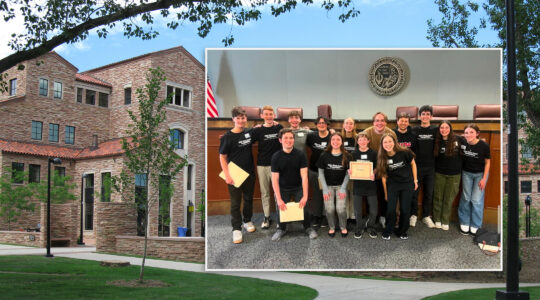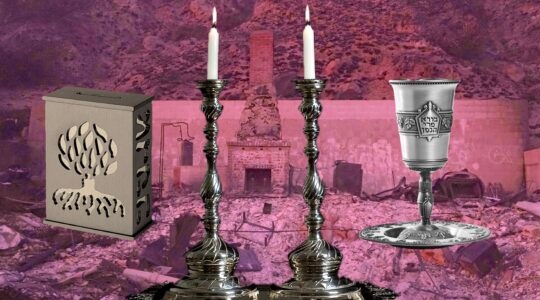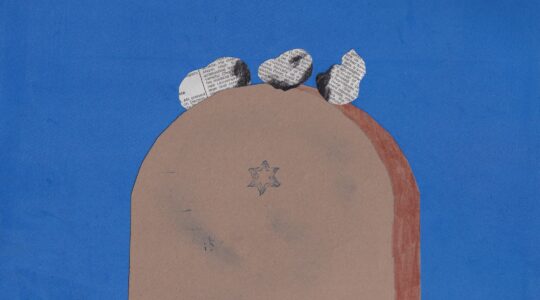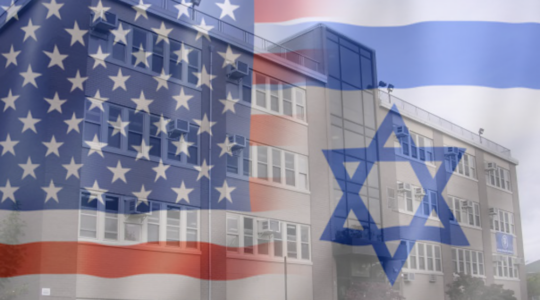I could have said “Dayeinu," “it would have been enough," if the President of the United States came to visit my synagogue, as he did today, May 22.
That President Obama came and visited, and I got the chance to greet him and introduce him to the congregation — Dayeinu. What I never anticipated was to have the chance to be in chavruta, in a moment of a Torah-study partnership, with the President. After we greeted him, we took the President into the Biran Beit Midrash at Adas. I explained as we entered that a Beit Midrash means a “House of Study,” how it’s far more than a library, but a place where people come to study Torah in chavruta, with a study partner, in a very special relationship. I pointed out that when Martin Buber wrote I and Thou, Buber’s reference to seeing the sacred in another human being, in true relationship, was based in the traditional Jewish idea of chavruta.
I further explained to the President that we are doing something very special at Adas Israel. We are taking the traditional I-Thou relationship of chavruta and bringing it into 21st-century discourse in our Beit Midrash. We don’t just study the Talmud and other classical Jewish texts in the traditional format. We create formats for people to encounter, to argue, to dissect, and expound upon core Jewish texts and ideas. The goal now is not simply book-learning, but making personal meaning, and coming into true dialogue as Jews about what it means to be fully human and moral and just.
At this point in our conversation, the President and I were standing in front of the Amud (lectern) at the Eastern Wall of the Beit Midrash. I opened a Sefer Torah (a Torah scroll), and pointed out to him this week’s Torah-portion, Bamidbar, the very beginning of the Book of Numbers, and explained that Jews everywhere in the world are all reading this section of the Torah together. And it was here, at the Torah, that our real chavruta began.
The President asked me to elaborate on the concept of chavruta. He asked, is it obligatory? I explained that the value of Torah-study is considered the most basic and essential Jewish act, that we must go back to our core narrative and classical texts to ground us in our values, and to guide us in our choices. Obama was fascinated by the idea of study as an obligation. “So,” he asked, “I know that your children have to come to Hebrew School and study. What about the adults? Is there a requirement or expectation that the adults come here and study as well?” (Inwardly I thought halevai — “would that it could be” — that all our adults would come and study all the time.)
I answered the President this way: “In our times, it’s difficult to bring many people to Torah by holding an obligation and expectation over them in a hierarchical way. Instead,” I said, “think about the metaphor of this moment: we are standing here, and the Torah is in front of us, and it is literally an open book. And here, now, we are in havruta. In the immediacy of relationship, with the Torah literally before us, we are seeking a deeper understanding together. This is our goal for our Beit Midrash. Both literally and metaphorically, our job is to open up the books, the texts, the ideas, and the values for people so that together we can learn them, question them, challenge them and each other. And then it is up to us to find how our discourse motivates us to live our lives more fully and deeply.”
So what happens with those ideas that you generate together, Obama asked me? I answered by explaining that the power of chavruta lies in its ability to be at the nexus of ideas and action. “Mr. President,” I said, “I know that you already know well the power of the ‘One-on-One’ to connect people and motivate them to action through responsibility one to the other.” He smiled and nodded enthusiastically.“ That’s chavruta,” I said, “only in chavruta, our responsibility to act is reinforced not only through our shared partnership, but also in our shared connection to our sacred texts, our shared history and values, and in our shared relationship to our God who exhorts us to justice.”
He thanked me warmly for this brief discussion. Dayeinu, it would have been enough to have had this incredible conversation with the President. But then in his speech, the President made the following remarks:
“Before I came out here, the rabbi showed me the room that’s been built to promote scholarship and dialogue, and to be able to find how we make our shared values live. And the reason you have that room is because applying those values to our lives is often hard, and it involves difficult choices. That’s why we study. That’s why it’s not just a formula. And that’s what we have to do as nations as well as individuals. We have to grapple and struggle with how do we apply the values that we care about to this very challenging and dangerous world.”
In that moment, the President’s visit to Adas Israel become not only historic, but sacred. When the President of the United States sees the potential for justice and peacemaking in the very technology of Judaism and chavruta, then we truly know that there is indeed great hope for the Jewish people, for Israel, and for the world.
Gil Steinlauf is senior rabbi at Adas Israel Congregation, the oldest and largest Conservative synagogue in Washington, D.C.
The New York Jewish Week brings you the stories behind the headlines, keeping you connected to Jewish life in New York. Help sustain the reporting you trust by donating today.




